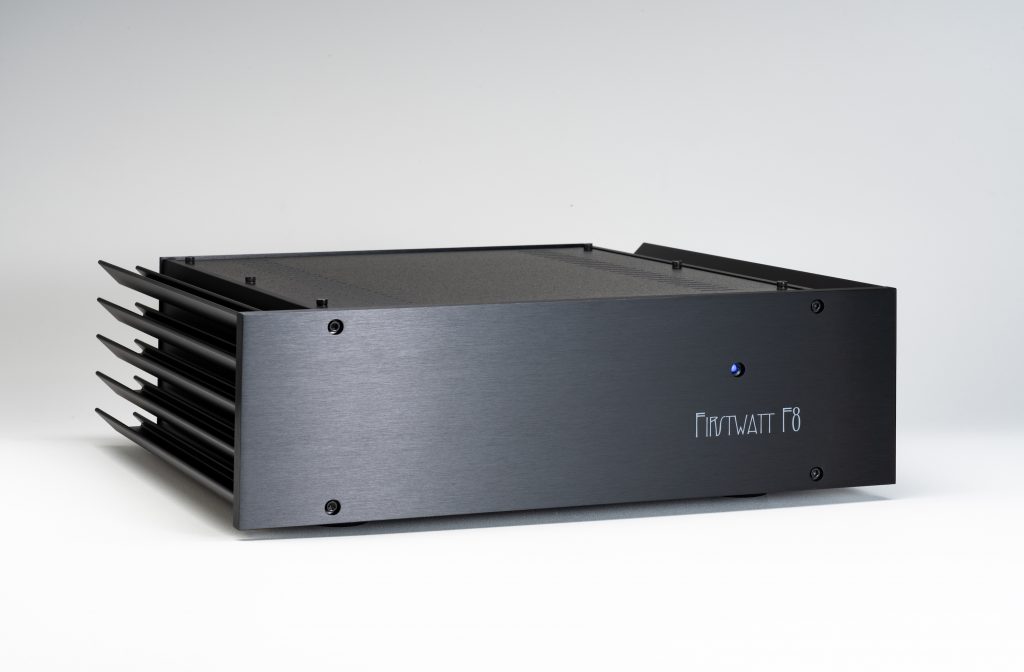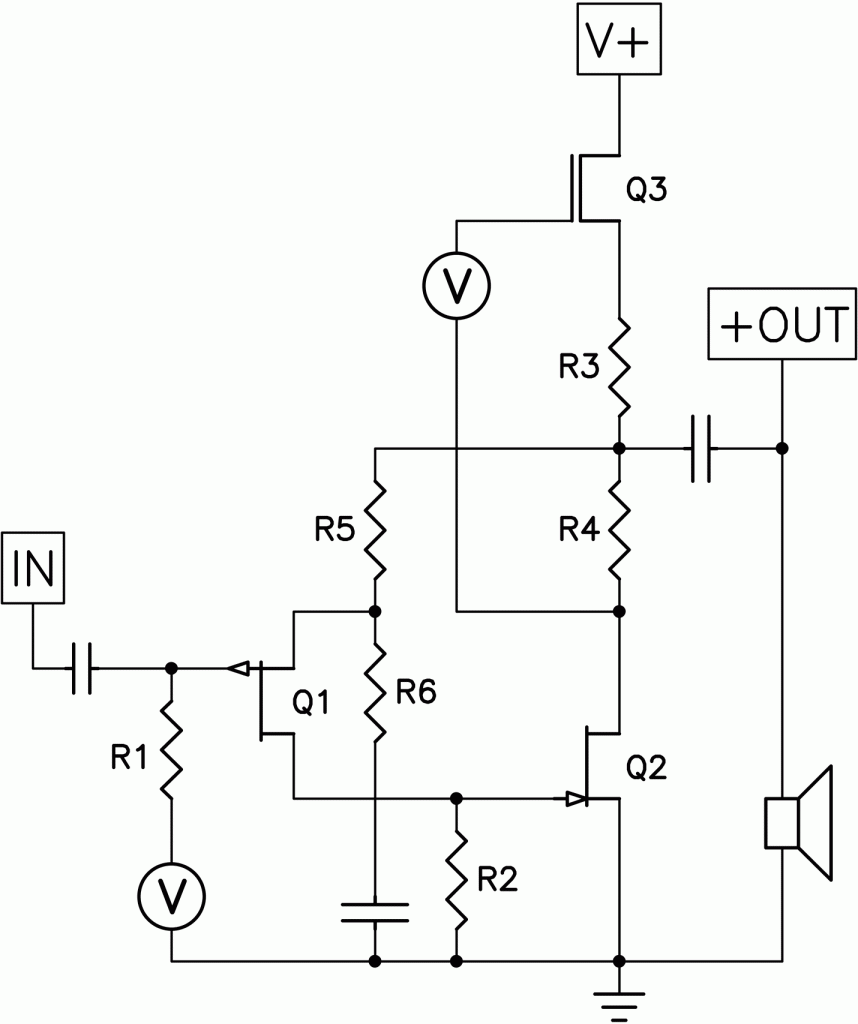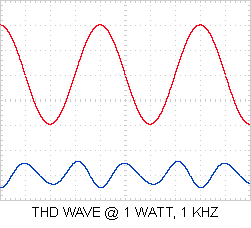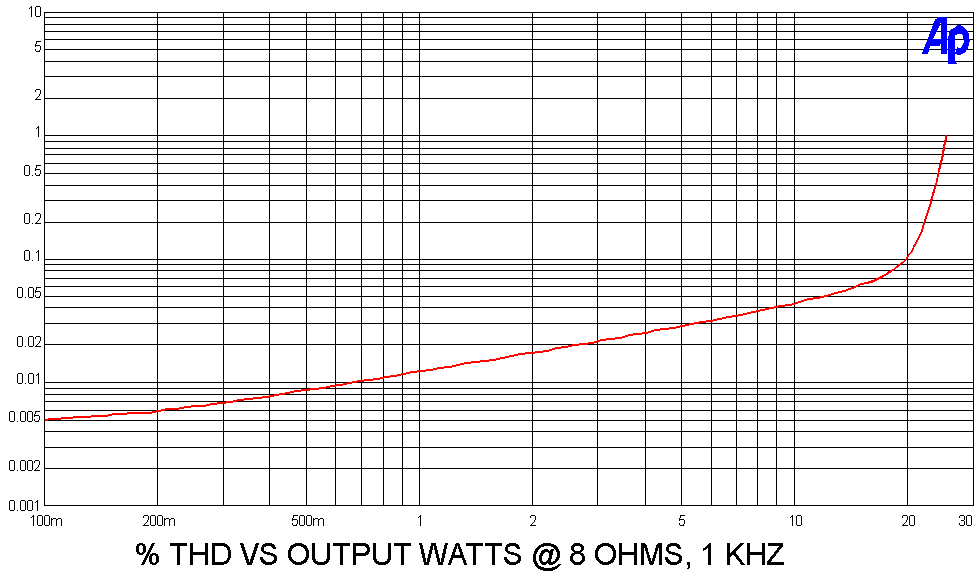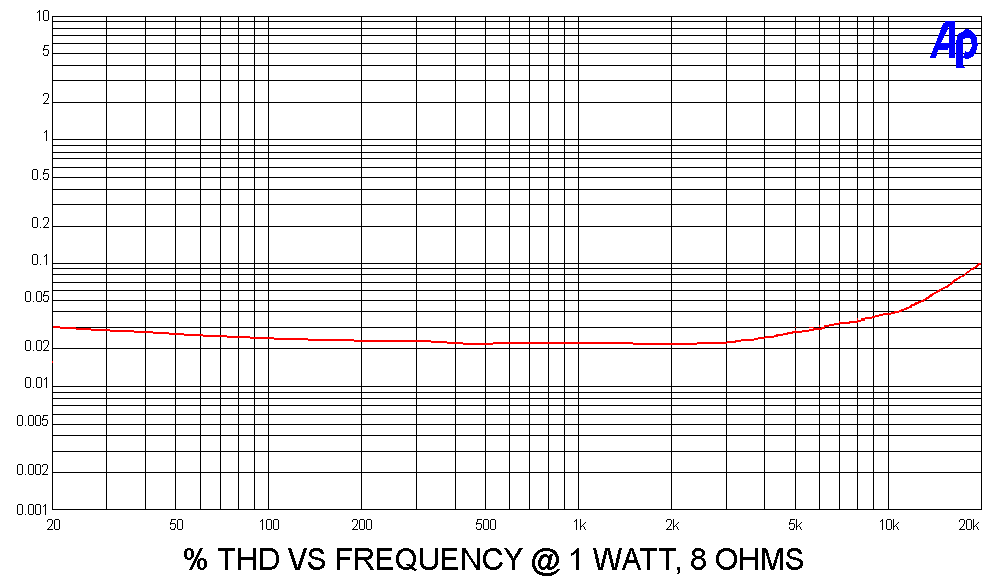Fewer transistors = Simpler circuit, simpler/smoother transfer
characteristic and a little better performance by measurement.
Something else is missing as well:
No degenerating resistors on the output power Jfet.
Auburn, CA August 10, 2020 — The new First Watt F8 power amplifier has been created as an updated version of the earlier J2 amplifier, introduced in 2009.
Like all First Watt designs, it is a relatively low power [25W/channel into 8-ohms] simple Class A circuit, designed with an unusually low parts count. It is the 21st product from First Watt, since its founding in 1998 as Nelson Pass’ “personal laboratory”.
(For those of you who may not be completely familiar with the First Watt brand name or its unique philosophy, please see “Watt’s the Deal” at firstwatt.com — as well as “Who is the Typical First Watt Customer” at the end of this press release.)
As he explains First Watt: “I spend a lot of time building and evaluating basic amplifier concepts with an eye toward producing the highest quality sound with elegantly simple circuits.
“There is no such thing as a perfect amplifier, but there is a best amplifier for each type of speaker, music, and listener. Each First Watt model is a unique design and is ‘best’ in some particular way. They look alike because they all use the same basic chassis and power transformer. On the upside, it makes it easy for me to test ideas and compare different designs with the hardware being a fixed constant.
“Looking for tomorrow's faceplate with yesterday's circuits? You're in the wrong place.”
“The J2 is perhaps the most popular amplifier made by First Watt. Brought to market eleven years ago, it was not intended for more than our usual 100 unit total production. However it was so well received that I broke my rule and it is still made. Still, there will be an end, as the special transistors needed have long since been unavailable and our supply is starting to run low.
“I wanted to create yet another amplifier with the SemiSouth SiC R100 power Jfets, so in 2015 I developed a design with the same output stage but an alternative front end circuit. The prototype was clearly an improvement, but the J2 remained so popular that we decided to wait. As the years went by, I put some more work into it, and now finally releasing it as the F8."
The simplified schematic:
There are two Common-Source gain stages, consisting of Q1 and Q2, both set to their operating points by current source Q3. Q1 is the Toshiba 2SJ74 Jfet, and Q2 is the SemiSouth Silicon Carbide R100 power Jfet, both parts NOS from the First Watt vault. Q3 is the venerable International Rectifier workhorse, IRFP240
"Five fewer transistors is part of the difference - the J2 input topology is what we refer to as a VFA, or “voltage feedback amplifier”. The F8 would be referred to as a CFA, or “current feedback amplifier”. Both approaches to feedback have their advantages, and there are adherents for both. In this case, the CFA topology gives several advantages - simpler circuit, simpler/smoother transfer characteristics and a little better performance by measurement. Something else is missing as well: no degenerating resistors on the output power Jfet.
"The Q3 'Mu follower' biases not only the output power Jfet Q2, but also the input Jfet Q1, and this bias feed is also the feedback signal of the CFA circuit. Both devices operate with the same phase with respect to their characteristics. This congruence helps give rise to the nice “negative phase” second-harmonic character that you can see here:
“This is not the transistor amplifier you may remember from the '70's. The fundamental of the amplifier output (red) at 1 watt along with a magnified image of the distortion (blue). You can see that it is a nearly pure second harmonic and that its phase alignment is “negative” at both peaks of the fundamental waveform. No spikes or weird looking stuff. And if you don't like that - well, it's only at 0.02%.
“10 years ago when I began working with SIT circuits, I discovered that there was a consistent preference for this sort of characteristic in amplifiers over a range of distortion levels from about .01% to 1%. Somewhere below that, it was not usually heard - and above that it could be excessive. Not only was second harmonic preferred over other harmonic content, but its phase seems to matter.
“I used blind evaluations for the SIT-1, the First Watt amplifier, and on the front panel there was a knob that allowed adjustment of this characteristic in distortion amplitude and phase. I found that listeners tended to cluster on the same setting, which was made the center of the adjustment meter. The F8 has this same characteristic, but down at the lower edge of audibility.
“You are probably aware that with First Watt, numbers aren't everything, but by virtue of the simpler and smoother gain path coupled with slightly better numbers, the F8 offers some improvement upon the character of the J2.
“What's missing? The F8 does not have a balanced input. It also has output coupling using two big electrolytic and one polypropylene capacitor with a roll-off frequency of 1 Hz.”
Nothing but the Facts:
Distortion curve vs output power at 8 ohms, 1 KHz"
Distortion curve vs output power at 4 ohms, 1 KHz:
Distortion vs. Frequency:
Gain/Frequency Response:
“As you compare the J2 and the F8, you will find quite a bit of similarity, but the F8 is a modest improvement in several areas. In particular, the damping factor and high frequency response are twice as good, and distortion numbers are lower. I am pleased to note that this is achieved with 10 dB less open loop gain on the circuit and 5 dB less feedback.
“Still, this is not the primary thing - it's just what I can show you in print. The real merit to the amplifier is in the experience of listening. This is a matter of how compatible it is with the rest of the audio system and the taste of the listener.
“This might not be the amplifier for you, but I think it deserves a listen.
“You will have noticed, I enjoy amplifiers with a little personality. They don't have to measure perfectly, they just have to sound good. This is a simple little Class A amplifier with a very nice personality, and I hope you like it.”
Nelson Pass
6/18/2020
Nominal Specifications:
- Distortion @ 1 watt, 8 ohms: 0.02%
- Input Impedance: 100 Kohm
- Gain: 15 dB
- Input Sensitivity (1 watt): 0.5 V
- Input Sensitivity (max output): 2.7 V
- Damping Factor: 38 @ 8 OHMS
- Output power 8 ohms: 25 watts @ 1% THD, 1KHz
- Output power 4 ohms: 13 watts @ 1% THD, 1KHz
- Frequency response: -0.5 dB @ 10 Hz, 200 KHz
- Noise: <100 uV unweighted, 20-20 KHz
- Power consumption: 170 watts
- Fuse: 3AG slow blow type - 2.5 Amp for 120 VAC / 1.25 Amp for 240 VAC
- Price: MSRP: $4,000. Shipping now.
- Warranty: Parts and labor for 3 years, not covering shipping costs or consequential damages.
Pass Laboratories
133395 New Airport Road, Ste G
Auburn, CA 95602
USA
1.530.878.5350
EDITOR’S NOTE:
As First Watt Models Are Not Your
Conventional Power Amplifier:
Who is a Typical First Watt Owner?
The First Watt customer is a bit different from the average Audiophile. First Watt amplifier fans have distinct types of speakers and are looking for a certain sound, and perhaps a simplistic theory of operation, with the additional benefit of small chassis size and more economical investment for a Nelson Pass product.
Listeners who enjoy First Watt components have highly efficient speakers — which may be classic older speakers, DIY speakers, or some of today’s higher-sensitivity speakers. Many people are drawn to Nelson Pass’ First Watt amplifiers because the amps sound so “tube-like” without the hassles and performance downsides of tubes. While there is absolutely not an exact solid state replacement for tubes, First Watt owners find that the best tube characteristics of sound are available in First Watt amplifiers, and often with desirable enhancements that the “tube sound” may need.
People often ask what a First Watt amp sounds like. There is no direct comparison of First Watt amps to other products, each model is a unique creation with its own distinct sound. And each First Watt amp has its own sonic personality, often with considerable differences from other First Watt models.
Other enthusiasts are drawn to First Watt amps because of the many unusual circuits, components, and modes of operation. Some examples: First Watt has produced one of the only current-drive amps ever commercially available in the history of sound reproduction. Nelson Pass created a new transistor type — the SIT (Static Induction Transistor), which is available only in First Watt amps. The First Watt F4 is the unusual “follower” amp. The just released F8 is a totally unique design, with a minimal number components producing superb sound — and again like nothing else.
First Watt amps offer tremendous sound quality at relatively modest investments. Other Nelson Pass’ Pass Labs amplifiers sell for up to $85,000. First Watt amplifiers, while not competing with Pass Labs’ products, do also offer beautiful and engaging sound. Additionally, the First Watt products with small chassis size are more convenient for many music lovers.
Just as every audiophile and system is one-of-a-kind, so too are the distinctive and fascinating First Watt products from Nelson Pass.




